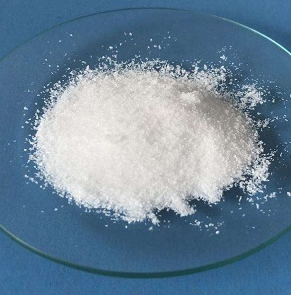Overview[1]
Sodium styrene sulfonate is one of the most suitable monomers for the synthesis of water-soluble polymer materials. Its polymer can be used as a dyeing modifier; sodium styrene sulfonate and polyvinyl benzyl trimethyl ammonium chloride form The polymer coordination compound can be used as artificial physiological membrane, etc.; the aqueous solution polymer made from this product can be used as flocculant, cosmetic dispersant, hair styling agent; the homopolymer or copolymer of this product is an excellent material for plastics, fibers, paper, etc. Antistatic agent; in addition, used as ion exchange resin and exchange membrane; also used in photosensitive chemicals (gelatin viscosity regulator) microcapsules, electroplating electrophotography developers and medicines for treating ulcers. At present, except for a few countries such as Japan and the United States, which have production capabilities for this monomer, most countries do not have this technology, but the demand is large, so it is meaningful to synthesize this monomer.

Preparation method[2]
Dry Br2 is added dropwise to the mixture of ethylbenzene and CCl4 under UV lamp irradiation. The product is washed, dried, and filtered, and fuming sulfuric acid is added dropwise. Then add NaCl, and obtain sodium styrene sulfonate after suction filtration.
Specific preparation steps include:
The 250mL three-neck flask is connected to a mechanical stirrer, a reflux condenser (the upper port is connected to an HBr absorption device), a dropping funnel, and 1/4 of the flask is immersed in a water bath. Add 52g ethylbenzene and 125mL CCl4 to heat the contents of the flask. Boil, and under the irradiation of an 8W mercury UV lamp, add dropwise 78g of Br2 that has been dried with concentrated sulfuric acid. The dripping speed is suitable so that the CCl4 reflux liquid is colorless. It takes about 1 to 2 hours to complete the addition. After the reactant is cooled with ice water, use ice water to cool it. Wash 3 times with NaHCO3 and ice water respectively, add anhydrous CaCl2 and dry overnight, remove CaCl2 and filter, distill out CCl4 under reduced pressure with a water pump (water bath heating), then use an oil pump to distill under reduced pressure, collect 97~100℃, 2.93kPa or 94 ℃, 2.13kPa, 85℃, 1.73kPa, 78 ~ 82℃, 1.33kPa fraction to obtain 65.7g of colorless α-bromoethylbenzene liquid with a yield of 72%.
Use 50% fuming sulfuric acid as the sulfonating agent to make the ratio of SO3 and ethyl bromide to 2.1:1. Take 5.5g of ethyl bromide and a small amount of hydroquinone and add it to the three-necked flask. Mechanically stir, dropwise add 4.2mLH, sO nSO, ice bath, keep the reaction temperature not exceeding 8°C. After the dropwise addition, slowly raise the temperature to about 20°C, and HBr gas begins to evolve (pass into AgNO3 to check). Stir mechanically for 0.5h, then pour into 40g of ice-water mixture, add about 8g of NaCl, then put it in the refrigerator overnight, filter out the white crystals, and turn slightly yellow after blowing dry.
Note:
Use 98% concentrated sulfuric acid instead of fuming sulfuric acid as the sulfonating agent for a comparative experiment. A paste-like solid fluid is generated, which is insoluble in water. Add NaCl to salt out, filter and absorb it dry, and then do an infrared spectrum. There are carbon and carbon doubles. Bonds are formed, but the absorption peaks of the -S groups of these compounds are at different positions, so they show broad absorption peaks. It can be concluded that using 98% concentrated sulfuric acid as the sulfonating agent will produce more by-products, but the amount of styrene sulfonic acid generated will be very small.
Purpose[2]
Sodium styrene sulfonate can be used as a dyeing improver (propylene fiber, polyester, polypropylene fiber, rayon), reactive emulsifier, polysulfide compound (dialysis membrane, battery, artificial body membrane), charged Anti-agent (nylon, recording paper, polyester), sulfur exchange resin (membrane), photographic agent (micro diaphragm), electroplating gloss agent.
Reference materials
[1] Preparation of polyethylene-sodium p-styrene sulfonate graft film Zu Jianhua; Wang Hengdong; Ye Yin; Yao Side; Qiu Shilong Journal of Radiation Research and Radiation Technology 2000 (3), 168-174
[2] Preparation of sodium p-styrene sulfonate Wang Peng; Wang Mingchang Henan Chemical Industry 2001 (11), 19-20


